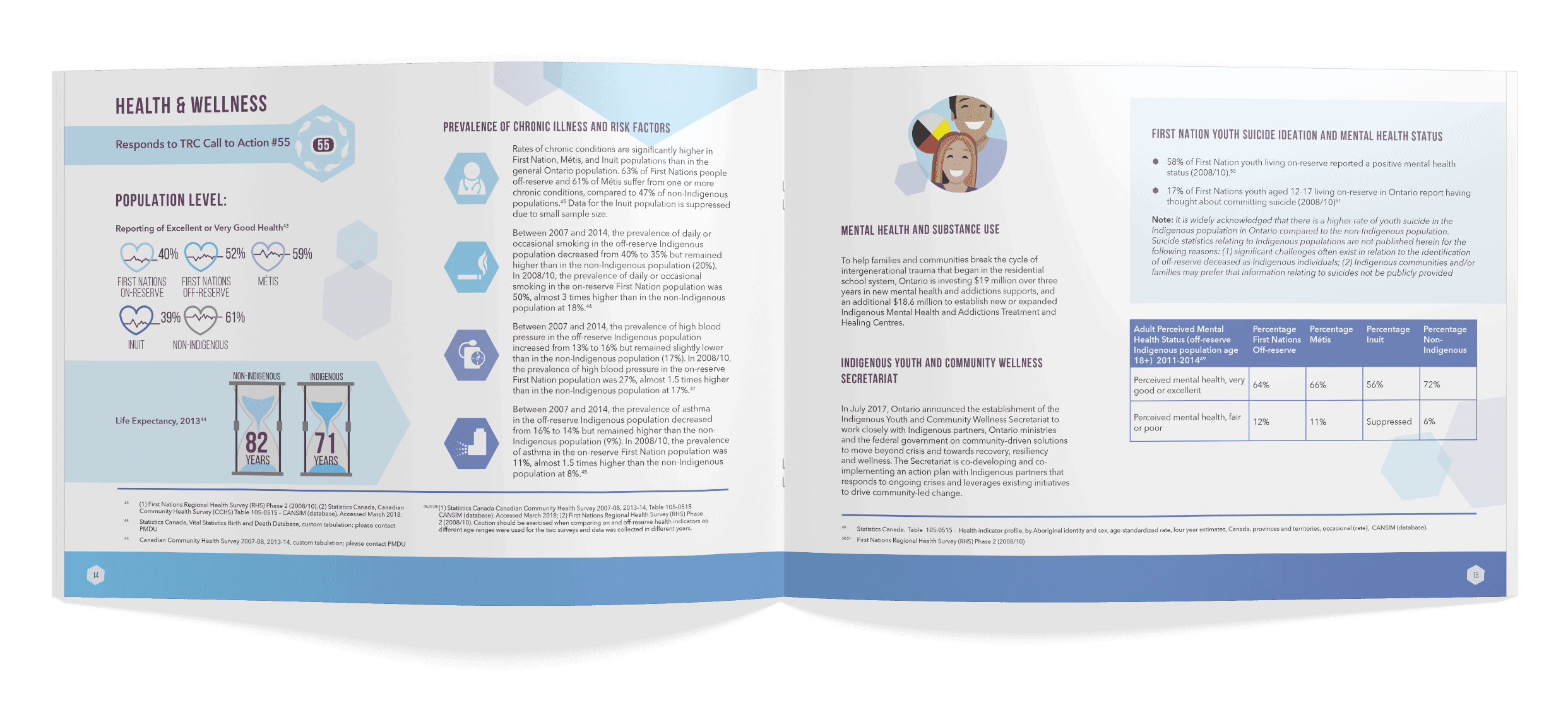CLIENT
Government of Ontario
SERVICES
Print Design
Campaign Design
Digital Media
Illustration
Helping First Nations develop a strong economy with the Government of Ontario.
Those who are working to build a strong economy for First Nations often have limited time for their own professional development. As a starting point, the Ontario government had gathered helpful training and resources into a development guide. But the guide was struggling to gain traction with its intended audience, as it used generic clip art and unwieldy layouts that were hard to navigate.
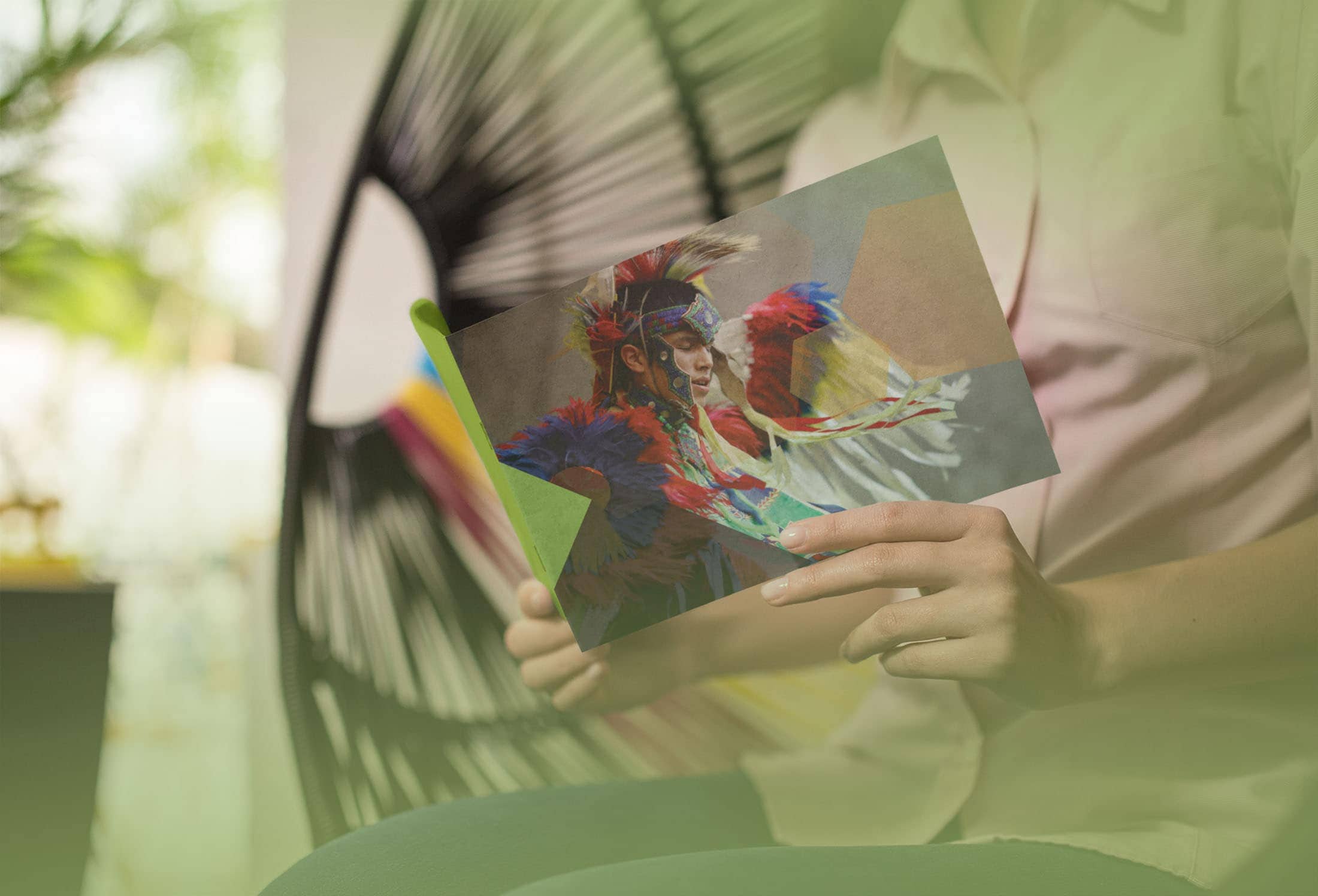
How we helped
We redesigned the 50-page development booklet and related website to make the content engaging and accessible, with custom colours and illustrations inspired by First Nations culture and geometry. Our focus was on clarifying the visual hierarchy, so that readers can flip to important information and browse helpful stories and resources.
Making a difference
The redesigned guide has become a go-to resource for busy professionals on the go. It’s been well received by government officials and First Nations communities alike, with many requests from officers as to where they can get their copy.
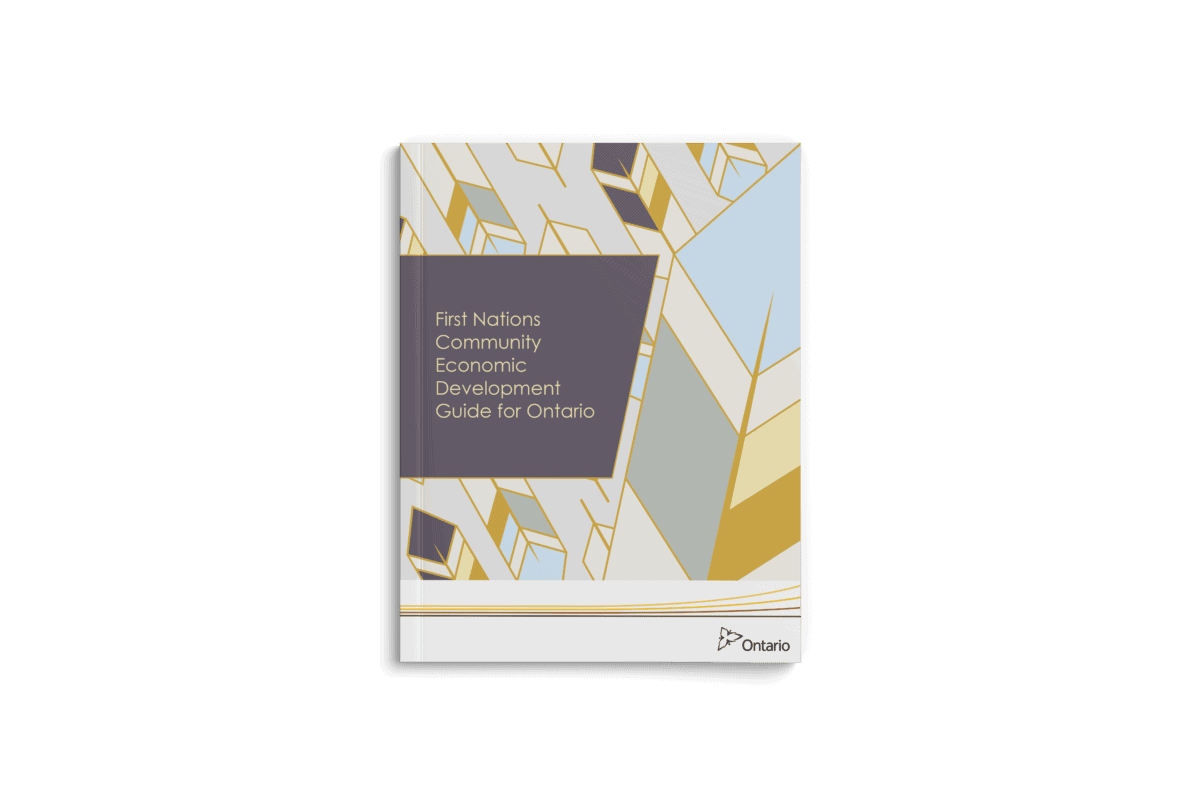

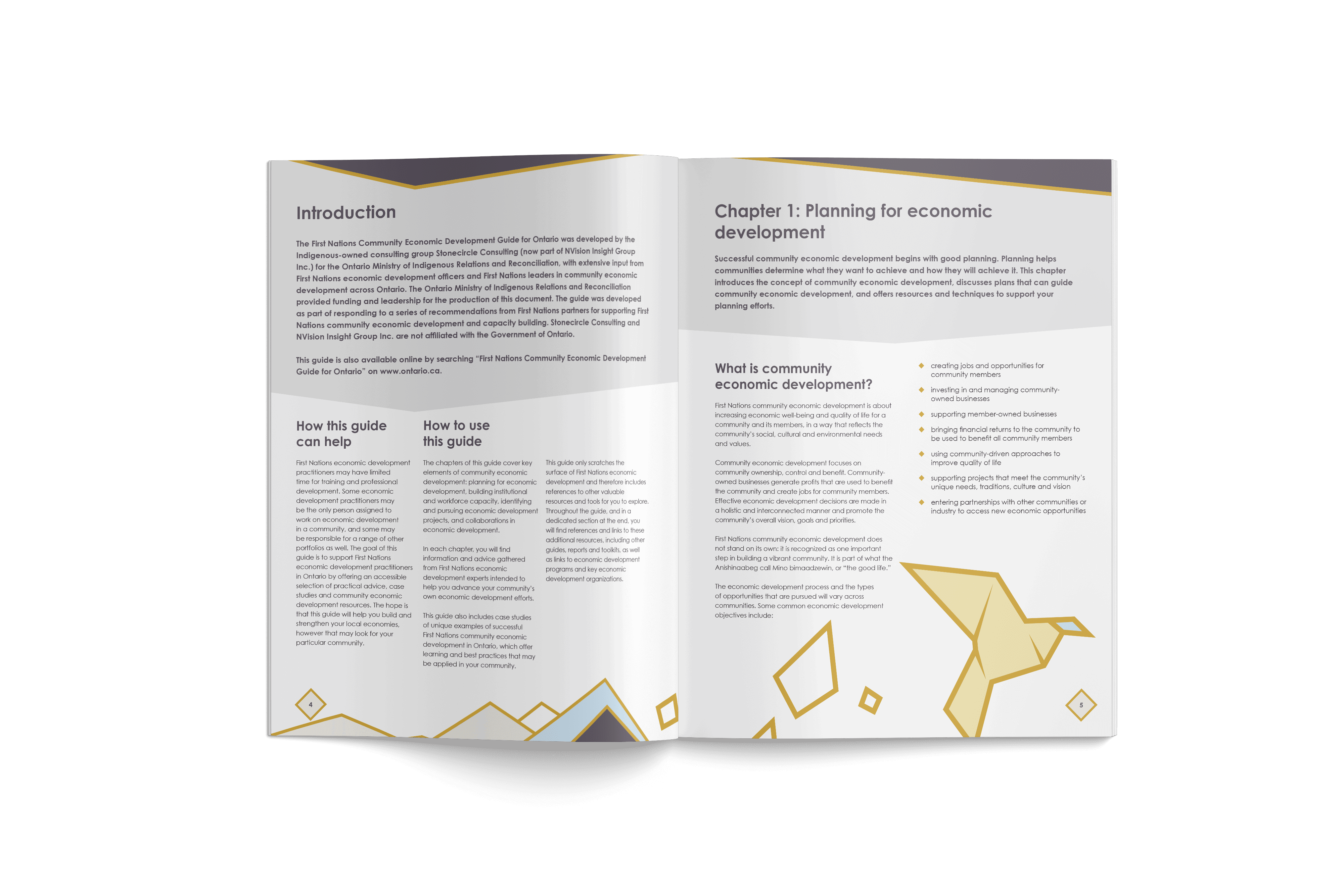
In the spirit of reconciliation
Over the last 10 years, the Ministry of Indigenous Relations and Reconciliation had made many inroads. And they wanted to share more about their work in a dynamic, colourful report. The curved, water-inspired graphics helped the information flow and guided readers through more than a decade of stories.
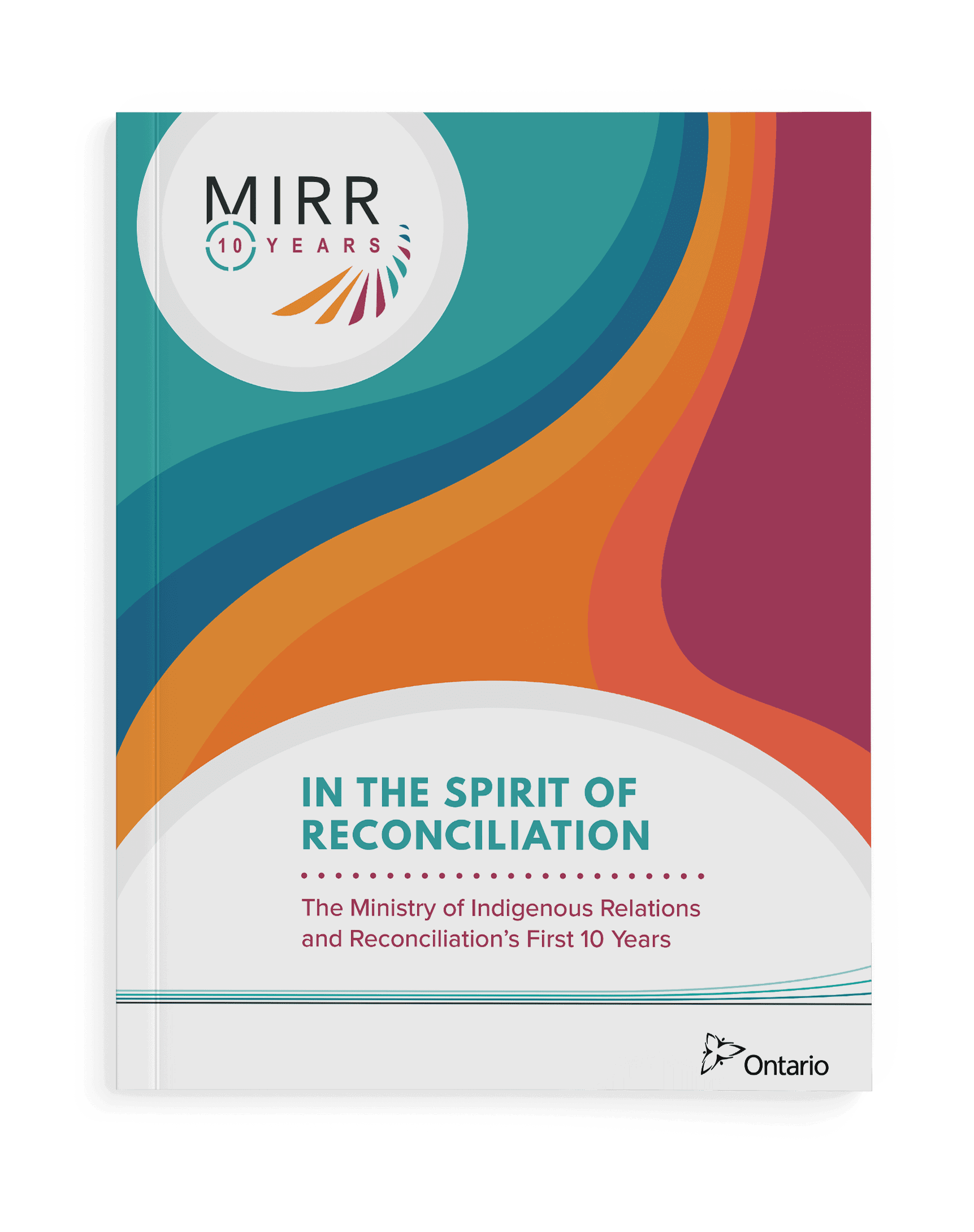
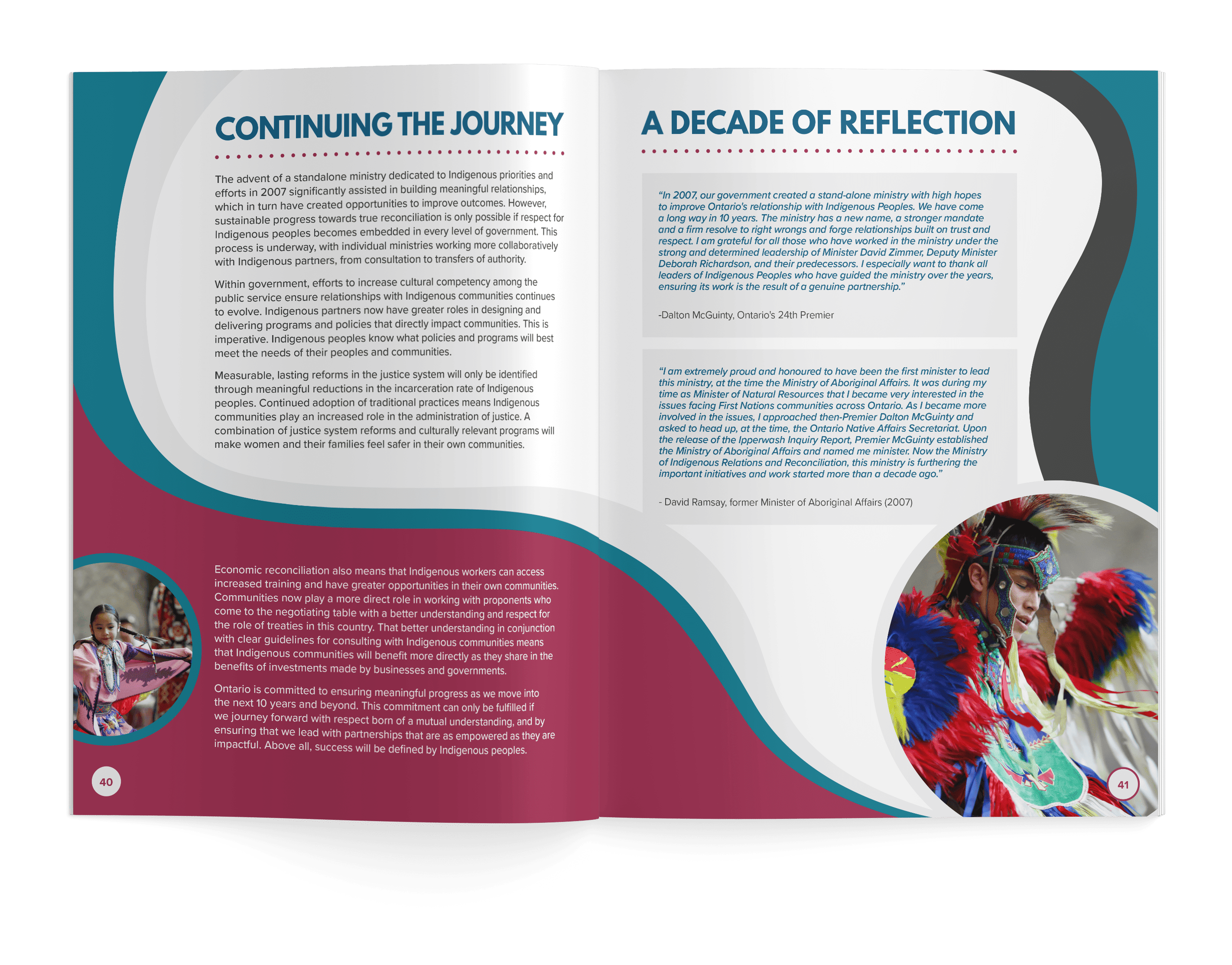
Spotting the signs
Anyone can recognize the signs of human trafficking. To help educate Indigenous youth on what to watch for, we partnered with the Ministry of Children, Community and Social Services on a campaign called Know Human Trafficking. We sat down with focus groups, researchers, and survivors to create a series of print and digital materials—all designed to encourage kids to report potential trafficking.
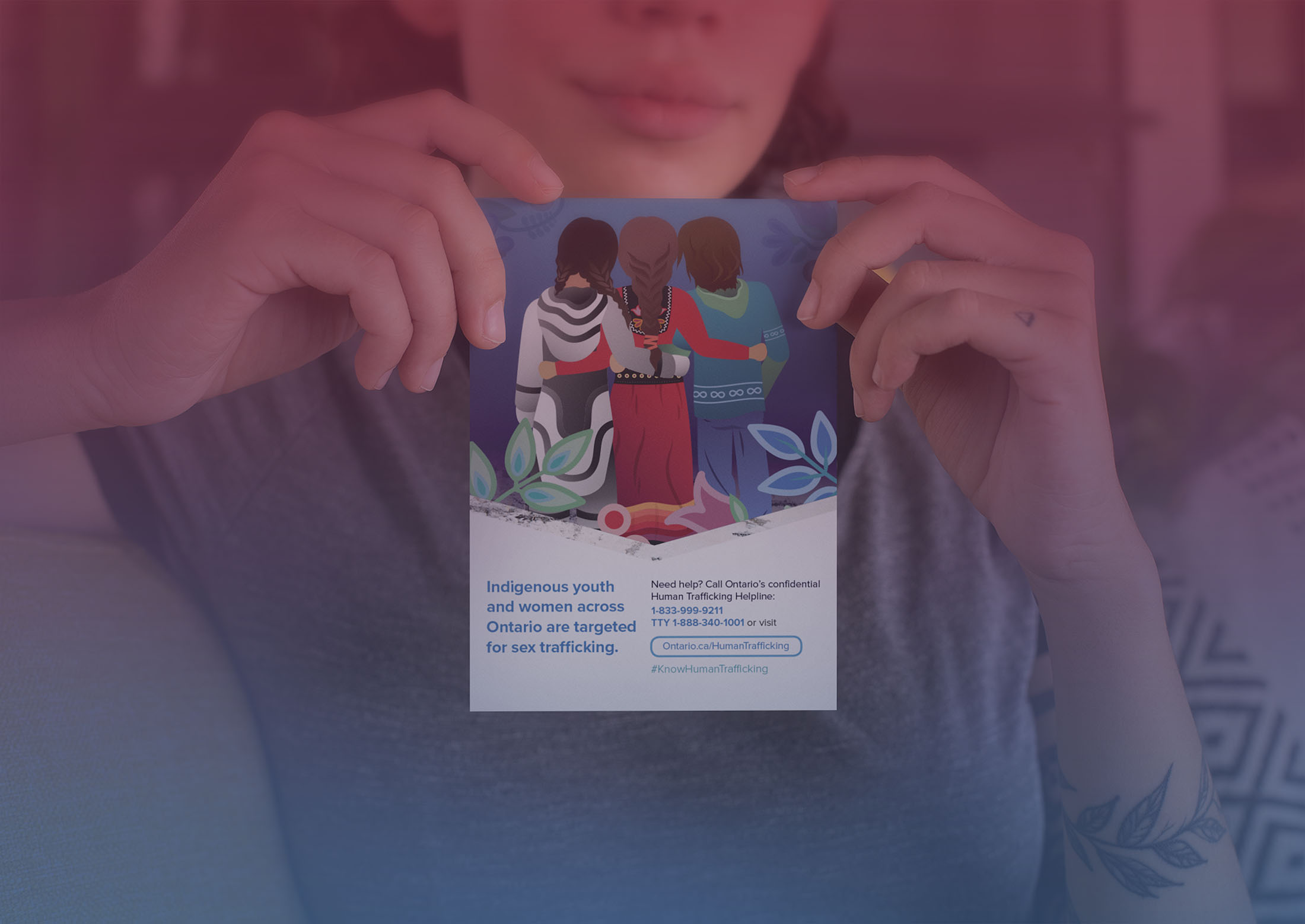
Strength in numbers
Data is effective only if people can glean insights from it. To help the Ontario government convey a deluge of facts and figures about Indigenous communities in the area, we designed a simple, visual research report. Its crystal-clear layout, intentional infographics, and meaningful colours helped highlight both positive and negative changes in demographic data about First Nation, Inuit, and Métis groups over time.
